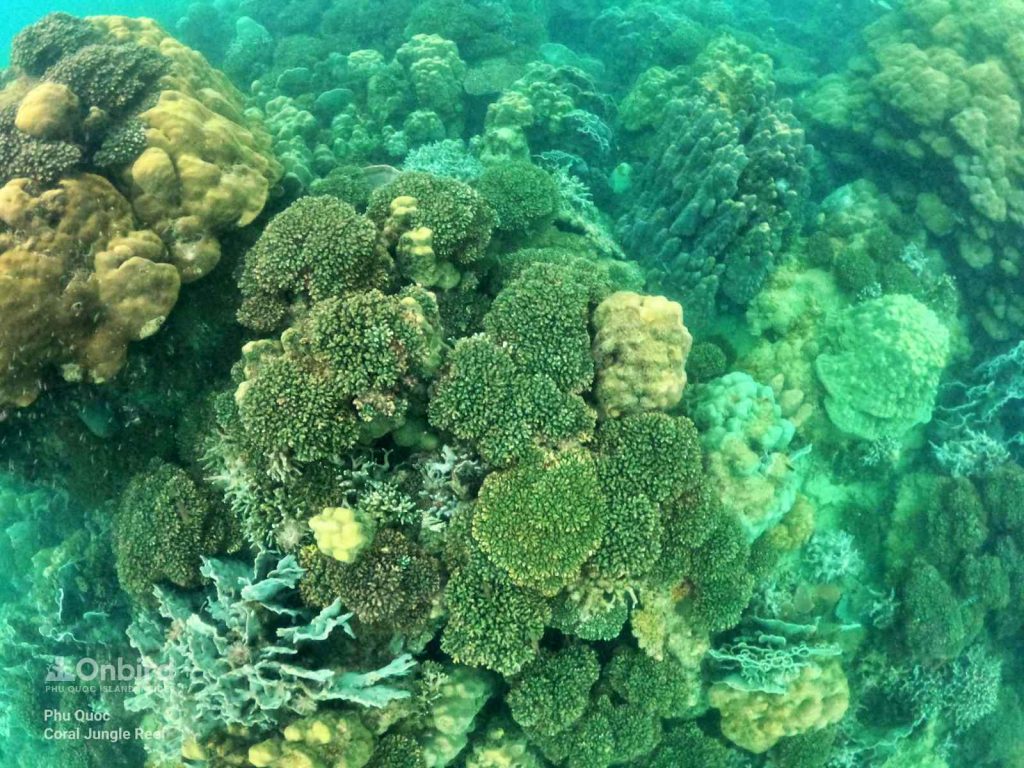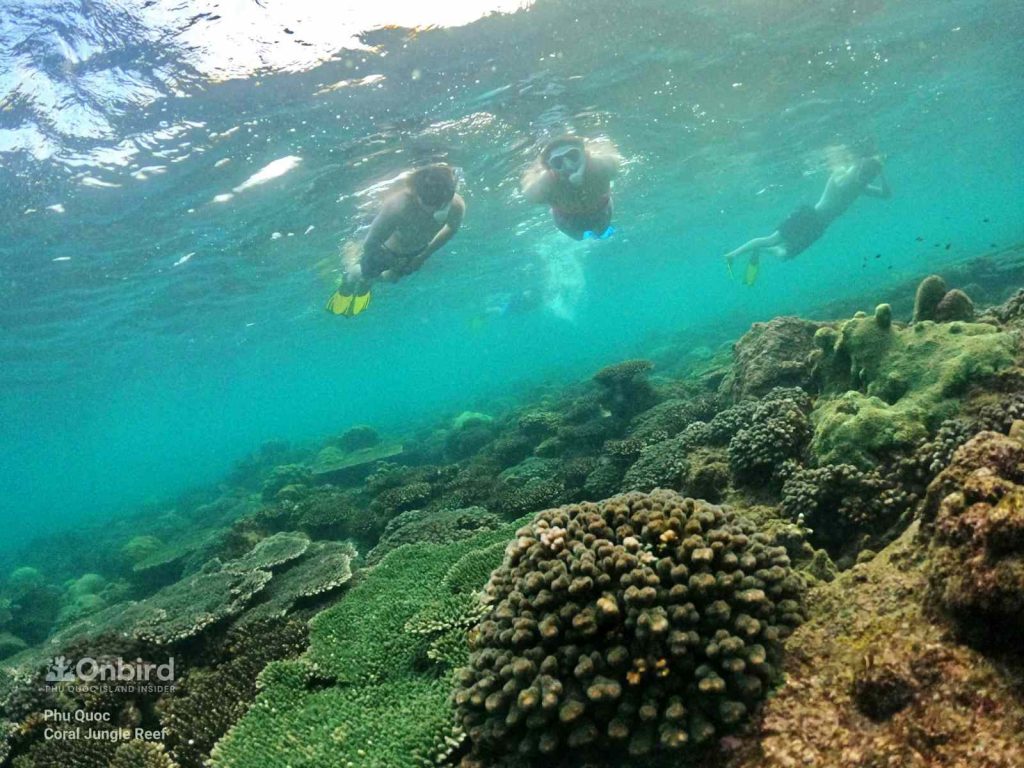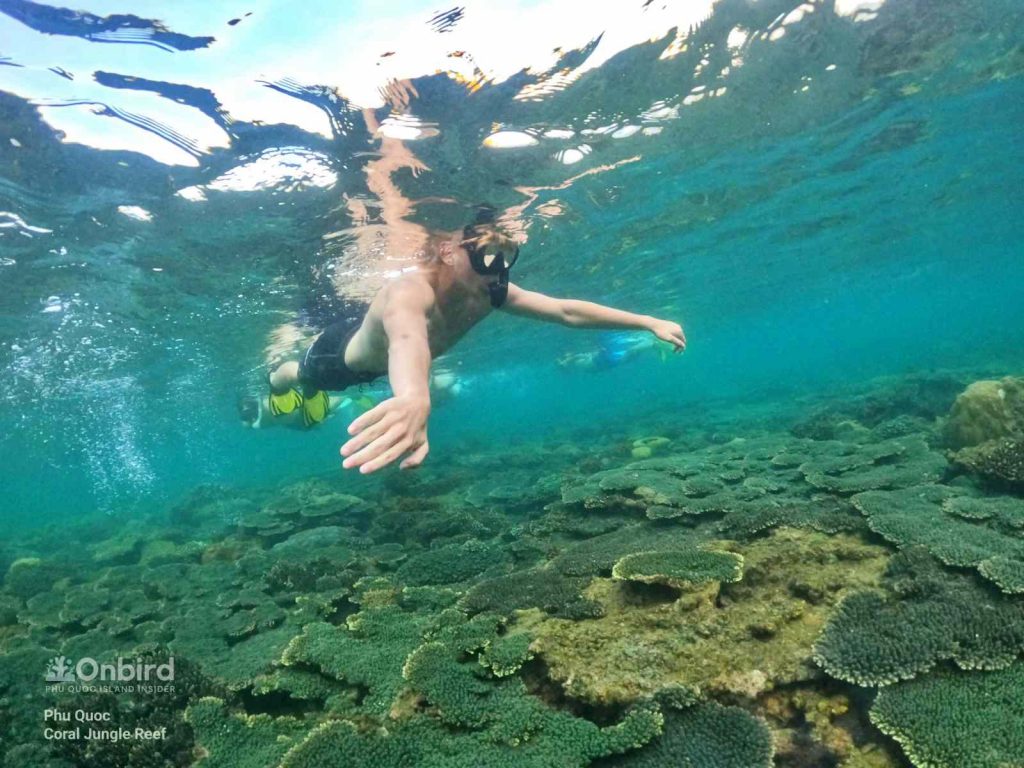Many families with young children aged between 4 to 12 years old seek a delightful snorkeling experience in Vietnam, a nation boasting over 3000 kilometers of coastline adorned with exquisite coral reefs. Destinations such as Da Nang, Nha Trang, Hoi An, Qui Nhon, Phu Quoc, Con Dao, and Tho Chu offer promising aquatic adventures. If you have decided to embark on a long-awaited family snorkeling excursion, the question remains: where should you venture for this memorable experience?
To address this question effectively, one must take into account several key factors when contemplating a snorkeling experience with your children.
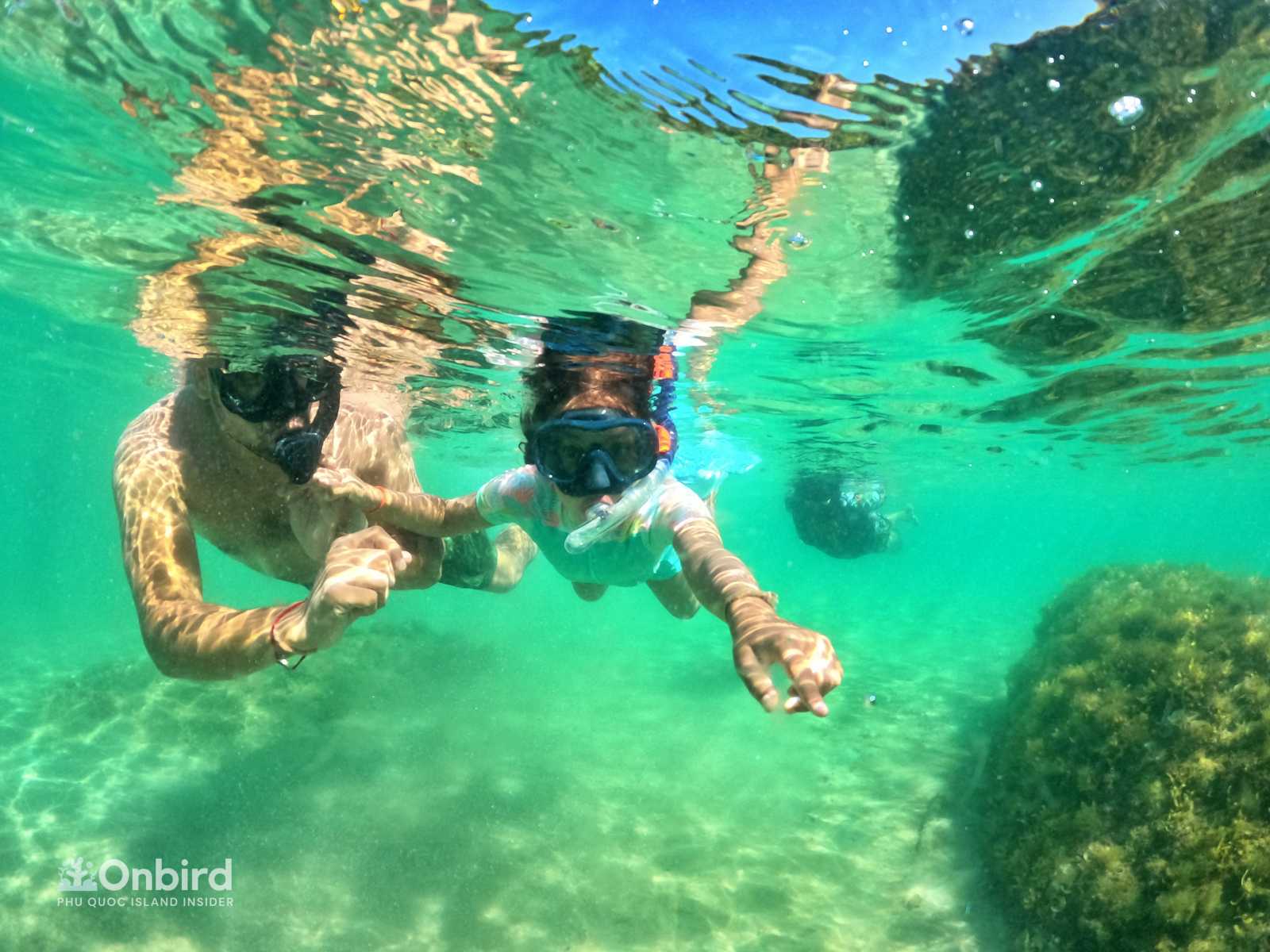
MAIN CONTENTS
1. AVERAGE DEPTH OF THE REEF APPROPRIATE FOR YOUNG CHILDREN
The captivating sights that your children will encounter during their aquatic expeditions have the potential to stimulate their imaginations for an extended period, possibly fostering a lasting affection for the ocean. It is advisable to initially assess the optimal depth of the reef for such experiences.
The optimal depth for young children to enjoy a captivating snorkeling experience typically ranges between 1 to 2.5 meters. This depth offers a close-up view for children to appreciate the vivid colors of the reef. Nevertheless, coral reefs often feature uneven terrain with undulating and shallow areas, which can pose challenges along the diving route. To prevent potential difficulties and ensure safety, it is advisable to have underwater guides well-versed in the reef’s layout to prevent accidental grounding in shallow waters, minimizing the risk of injury to children and adults, as well as unintentional damage to coral formations.

One of the most celebrated diving locations in Vietnam, notably recognized on the internet, is Hon Mun in Nha Trang. Here, the underwater topography is characterized by steep terrain, with coral formations extending to depths of up to 10 meters. However, due to this depth, the corals are not easily visible from the water’s surface, posing a challenge for snorkelers.
During a professional snorkeling or diving excursion with OnBird Phu Quoc, both parents and children will be guided to a tranquil, shallow water area devoid of currents. Here, children can acclimate to snorkeling sensations before progressing to deeper waters. They will receive instruction on snorkeling equipment usage and safety protocols, ensuring a well-prepared and secure experience.
2. UNDERWATER VISION
Underwater visibility stands out as a pivotal element in the coral reef diving encounter. While seasoned divers can plunge into the depths for a closer look at the coral, the vast majority of young children are limited to observing the coral from the water’s surface. Hence, visibility, in conjunction with depth, significantly shapes the initial impression for children. Optimal conditions for young children’s diving experiences encompass an underwater visibility range of 3-5 meters alongside shallow coral reefs, with exceptional visibility of 7-8 meters deemed ideal. Factors such as currents, wave level, wave direction and the topography of the reef affect underwater visibility, necessitating the organization’s expertise to forecast underwater conditions and schedule dives, and snorkeling during periods of optimal visibility. Proficient snorkeling/diving organizations should possess comprehensive knowledge of coral reef topography, anticipate daily currents, and consider varying time frames within a day to curate an immersive experience that surpasses expectations for both children and parents.
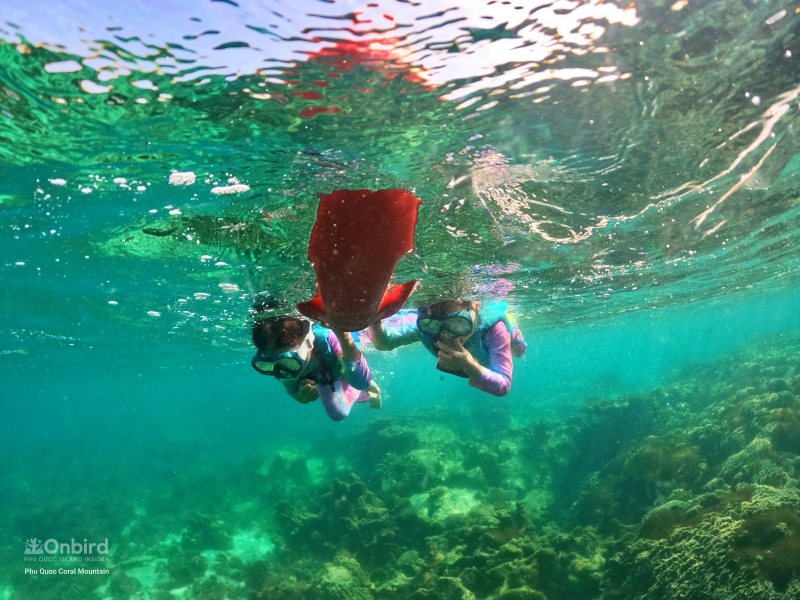
3. CURRENT AT THE CORAL REEF
4. THE REEF VARIETY AND CORAL HEALTH STATUS
Not similar to soft coral species, hard corals are types which basically need sunlight to help with photosynthesis to create nutrients for algae and corals, so only coral reefs can be seen strong in shallow waters, especially from 0.5m to 3m, the lower the average depth of coral reefs, the higher the coverage and diversity.

5. THE MOST IDEAL CORAL REEF FOR FAMILIES WITH KIDS IN VIETNAM TO SNORKEL
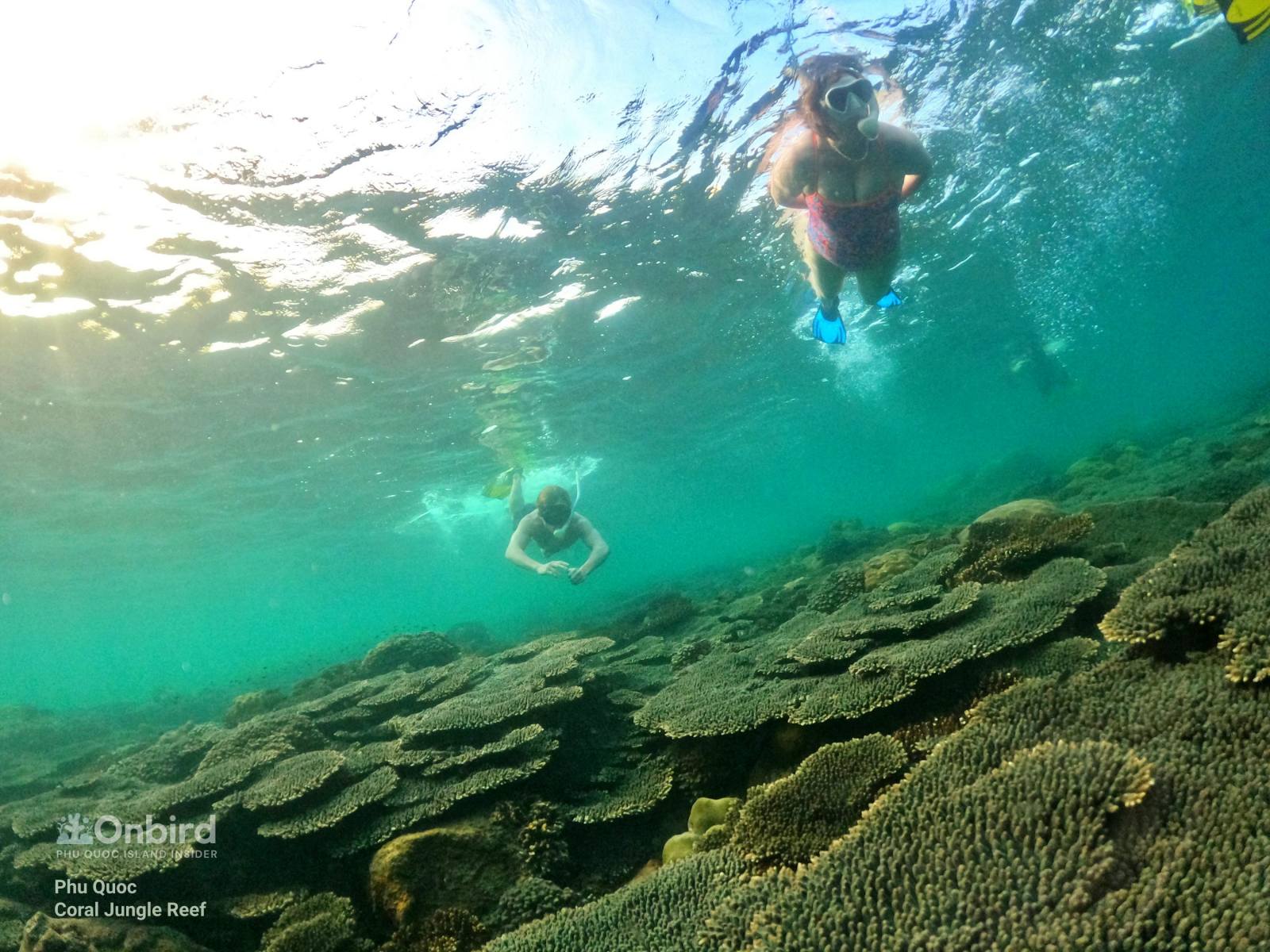
Phu Quoc can be considered as the top place in Vietnam when it comes to scuba diving, even surpassing Nha Trang when it has 21 coral reefs for visitors to experience, the coral condition can be said to be better than Nha Trang. Pages a lot. The coral reefs in Phu Quoc have a gentle slope with an average depth of 1.5 – 3.5m and a depth of 9-10m, with a wide, flat sand structure that helps anchor ships safely and is extremely suitable. with families with young children to experience snorkeling. In particular, from Onbird’s assessment, Coral Jungle Reef can be said to be the number one diving spot in Phu Quoc in particular and in Vietnam in general for families with young children. With more than 20 different species of corals with a survival rate of up to 95-99%, this is the healthiest coral reef in Phu Quoc, one of the largest coral reefs in Phu Quoc and Vietnam with a high coverage. area up to 82.5%. Underwater visibility during the year is always guaranteed from 4 – 10m, which is ideal for experience, especially here parents and children will be able to explore an authentic coral forest with a depth of 0.5 – 1.5m a lot. colorful hard corals, very vivid.



 日本語
日本語 中文
中文 한국어
한국어 Tiếng Việt
Tiếng Việt

